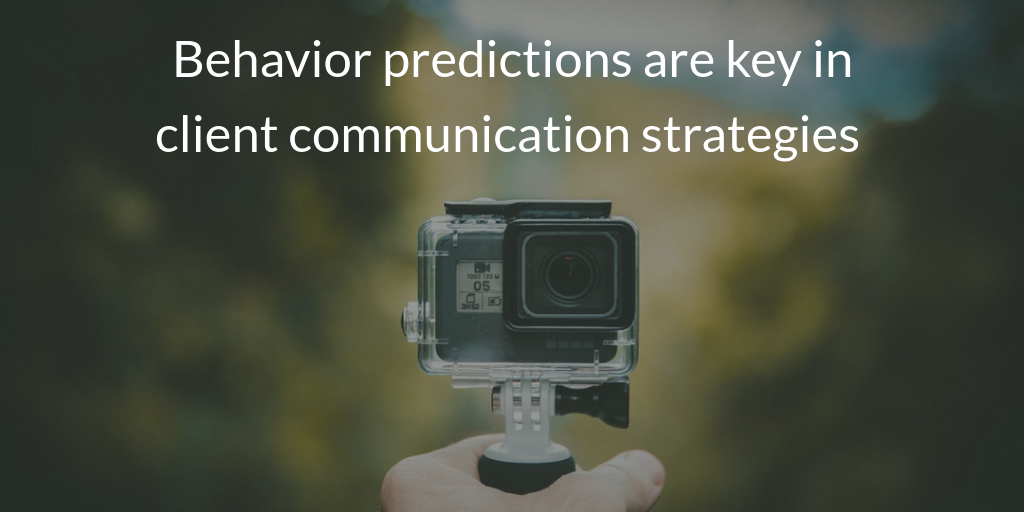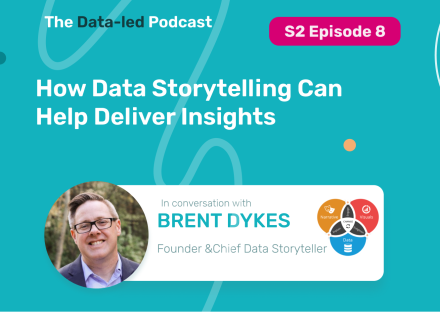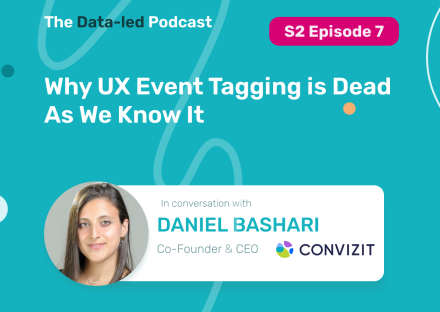I used to be a marketer and I am guilty of every classic trick in the book. Yes, you heard me right: guilty!
I am guilty of sending the same email to every subscriber in my list.
I am guilty of sending the same email twice to the same user.
I am also guilty of sending irrelevant messages to our clients.

Yes, I admit it, I’ve done it all. Haven’t you?
Now that I’ve turned to analytics, I’ve realized that placing all the clients in one comprehensive list and bombarding them with emails is not the way to do it.
Stop spamming your clients with irrelevant emails! You will only irritate and drive them away!
Instead, split your users into categories and personalize your marketing campaigns to the max. How?
1. Label your leads, users and customers
It takes no feat of imagination to figure out that, nowadays, if you leave your email address on a site, you will receive a ton of emails related to that subject until the user cycle is finished.
For instance, if you download an ebook, you will automatically be put on an emailing list and you will receive other emails related to other ebooks, until they run out of ebooks to advertise for 🙂
These are event driven marketing automations. Almost everyone uses them and there is nothing wrong with it! But are companies making the best of the info they have on their users?
In my experience, I have seen 2 types of mistakes that can be easily addressed:
A. Companies either include all the users on the same list and deal with them the same, regardless of the customer life cycle stage they are in (leads / sign-ups / paying customers / clients with churn risk etc.).
For instance, they send everyone in the list the same email or newsletter. But what’s the point of getting emails about how to finish onboarding if you’ve already finished it?
B. Or… companies use the info they have on their users only for the stage they are in, but they don’t record it anywhere in the system. So this data is not available for later usage.
Say a client downloads an ebook and then reaches the onboarding step. The information that he previously downloaded an ebook is used only at that particular stage, to advertise for other ebooks, but it is then lost in the system. That piece of info will not be available later on during onboarding.
So here’s what we suggest: use labels.
Labels are essential to creating user profiles and to better understanding client behavior.

You should label users everytime:
- you discover any piece of context about them (first time user or recurring user; user belongs to a big company; user is from the USA etc.)
- they perform mission critical actions on your site (e.g.: client downloaded ebook, client finished onboarding, client contacted live chat while checking the prices, client spent a lot of time on the pricing page etc.) and
- they enter a new customer life cycle stage related to your product (leads / sign-ups / paying customers / clients with churn risk etc.).
And this is where the value of these labels lies: they help you connect all the missing dots about a client, and create a comprehensive user profile.
Armed with this info, you won’t fall into the trap of pitching your product to a user who is already a paying customer or spamming everyone with irrelevant emails.
On the contrary, you will be able to approach each user according to their needs.
For example, if you are trying to sell a new product feature to your users, you should pitch it differently for someone who’s just trying out your product, as opposed to someone who’s making full use of all the features, or someone who’s about to churn.
So, if you are sending a newsletter announcing this new feature, make sure that at least the intro is adapted to the various user categories you have got, if not the entire message. It makes, sense, doesn’t it?
So, once you’ve gathered all this info about your users, split them into categories and then segment any marketing campaign by adapting and personalizing the message for each user category.
2. Use behavior predictions to your advantage
Another angle that you should definitely look at when personalizing your marketing campaigns is your client’s next move.

We work with two types of client behavior predictions:
- user conversion predictions, and
- churn predictions
For instance, you can generate a marketing campaign especially dedicated to the users who have finished the onboarding but have a small chance of conversion. One of the best incentives in this case would be a big discount, as this is often the main reason holding them back from converting.
On the contrary, for the users with a high chance of conversion money is probably not an issue, so, to help you close the deal faster, you can send them success stories that would allow them to get quick wins from your product.
For the ones with a high churn risk you could opt for an informative email, educating them on the product features they haven’t used yet. Including other clients’ reviews on those features might open their eyes and see something about your product that they haven’t seen before.
As for those who have a low churn risk, they could be asked for a review that you can later on use to your advantage. You could also ask them to invite their friends to try your app.
3. Target users based on scoring systems
You can also personalize the content of your marketing campaigns by taking into account your client’s:
- Engagement scoring
- Lead scoring, and
- NPS (net promoters score)

Let’s take them quickly in turn:
A. The engagement scoring is closely related to the churn risk. A high engagement score leads to a low churn risk, and the other way around: a low engagement score equals a high churn risk. For marketing campaigns strategies – please take a look in the previous chapter. You can also read more about engagement scoring here.
B. Lead scoring is a ‘methodology used by sales and marketing departments to determine the worthiness of leads, or potential customers, by attaching values to them based on their behavior relating to their interest in products or services’.
The whole point here is for your marketing campaigns to be as targeted and as informative as possible so that you increase the lead score of you users. A quality user that has a higher change of converting is an educated user.
C. NPS (net promoter score) is a metric that measures the customer experience and their loyalty related to a product or service.
If you register a low NPS you could think about launching a marketing campaign meant to gather data on how to improve your product according to the client’s needs.
A high NPS an lead to a campaign asking people for reviews or asking them to recommend you to their peers and partners. As an incentive you can offer them a discount or a free feature, transforming them in ambassadors for your product.
So make sure to enrich your marketing automation platform with data from your engagement scoring, lead scoring and NPS platforms.
4. Take over the communication between third parties and your users
The third parties that help you interact with your users can also sometimes hinder the relationship with them.
Let’s take a look at:
- Payment events, and
- Support tickets
A. Payment events
Many payment platforms send emails to the clients on your behalf, informing the client that the payment has been made, or that there was a payment error etc.
I would strongly suggest that you minimize as much as possible number of emails sent from these platform, as they are not customisable for your company. You cannot control how they sound or look like and how they will be perceived by the clients.
Think about the ‘declined payment’ notifications. Have you ever received one? If so, you might agree with me: they sound very plain, harsh, insensitive even… Users might even be tempted to abandon the purchase if they feel irritated by the way the notification is phrased.
Wouldn’t this be a priceless opportunity to bring back your clients and communicate with them more efficiently? You can have a huge impact on the churn rate by choosing the right tone and personalised messages.
B. Support tickets
Knowing if a contacted your support team, or how many users frequently open support tickets provides valuable information on the user. This info should be integrated with the rest of the labels & data you have collected about the user on the marketing automation platform.
You can make a cross-check how many users are highly engaged and use the support system frequently. To secure their fidelity you could send a notification on behalf of the CEO ensuring the continuous development of the product. You could even try something more daring: share the roadmap with this particular category of users, as they are considered safe and interested to stay with your company. The chances that a highly engaged, paying customer who constantly contacts the support team and is also subscribed to the newsletter is actually your competition are close to zero.
Ideally, every piece of info sent to the client and every support ticket should follow your recipe and communication strategies.
So, what should you take with you after reading this article?

The smartest way to attract new customers is to personalize your marketing campaigns. How?
- Label users everytime you discover any piece of context about them, any mission critical action they perform on your site, and any change in their customer life cycle stage. Split customers into categories. Target them with dedicated marketing campaigns.
- Adapt your campaigns to your users taking into account their churn risk and their chances of conversion.
- Metrics showing the degree of involvement of the users, their loyalty towards your product or the worthiness of your leads also make a huge difference in the way you should approach them.
- Limit as much as possible the users’ need to communicate with third parties about your product, as third parties can never represent your interests the way you need them to.
If you’re looking to get deep insights into how your customers use your product, InnerTrends can help. You won’t have to be a data scientist to discover the best growth opportunities for your business, our software will take care of that for you.
Schedule a Demo with us and witness with your own eyes just how powerful InnerTrends can be.




